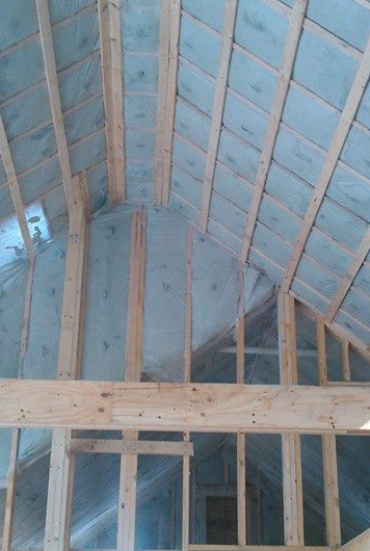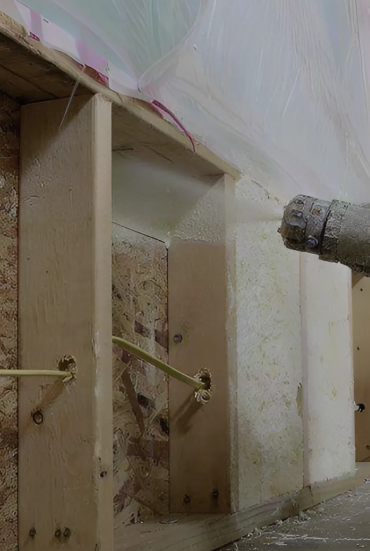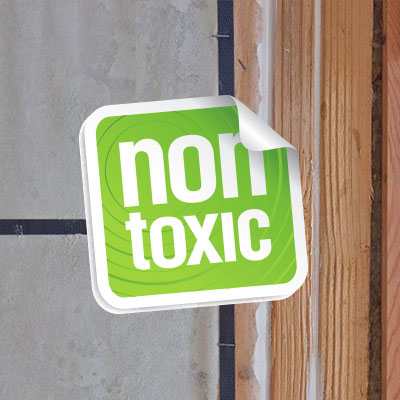Airkrete insulation
Our thermal insulation material differs from all existing ones and meets the strictest environmental and technical standards of our time. Our goal is to inform not only construction professionals, but also home owners about the outstanding characteristics of Airkrete and to provide full support in its implementation worldwide.
Advantages of our thermal insulation material
We believe that our customers are an integral part of the process of improving the technology for the production of our innovative material.
100% Fireproof
No Toxic Fumes
Scrubs CO2 out of the Air
Negative Carbon Footprint
Reduces Outside Noises by more than 75%
Keeps Pollen & Airborne Allergens Outside
Insect Deterrent
Rodent Deterrent
Increased Indoor Comfort
Non Allergenic
Increased Home Resale Value
Life Saving Applications


Green insulation
Airkrete is injected into the wall cavities through small holes drilled into the exterior walls from the outside.
Properties of our thermal insulation material
- Effectiveinsulation
- Doesn’t expand
or heat up - What about
shrinkage?
At R 3.9 per inch, it’s more effective than fiber insulations, like fiberglass and cellulose. It is even as effective as several of more expensive spray foam and rigid board insulations. Like other types foam insulation, it seals as it insulates, slowing up energy loss in two ways: resisting the movement of heat by conduction and stopping air leaks.
Unlike messy polyurethane-based foams, Air Krete doesn’t rely on a solvent-based chemical process. It’s made up of air, water, and magnesium oxide (MGO) and is completely non-toxic.
Unlike standard 2-part spray foam insulation, Air Krete won’t heat up upon application, so there is no potential for excess heat generation. Polyurethane sprays foams, on the other hand, have been known to char, smolder or ignite when installed improperly. Air Krete won’t burn even during a house fire.
Being water based, Air Krete does take longer to cure than other foams. Ventilation guidelines, including leaving the access holes unplugged, ensure reasonable dry times. It is also essential to avoiding spraying Air Krete between vapor barriers. In some cases dehumidification may be recommended to speed the curing process.
Shrinkage is a question that comes up when any insulation is installed in a wall, ceiling, or floor cavity. After all, if insulation shrinks (or settles) after installation, its ability to resist heat flow and to stop air leaks is compromised. Because it’s inside a closed cavity, shrinkage is difficult to detect. Unlike several other types of foam insulation, tests show that Air Krete will not shrink as long as it is injected into an enclosed cavity. Injection into an enclosed cavity allows the foam to be slightly “pressurized”. In an open cavity, pressurization is not possible, and slight shrinkage may result.
Where is Airkrete used
AirKrete insulation is used in various types of buildings and structures due to its unique properties: eco-friendliness, fire resistance, moisture resistance and high energy efficiency. Below are the main areas of AirKrete application:
Residential buildings
— Walls
— Attics and lofts
— Basement and ground floors
— Floors
Commercial buildings
— Office buildings
— Shopping centers and warehouses
— Hotels and restaurants
Industrial facilities
— Factories and production facilities
— Cold storage warehouses
Historical buildings
— AirKrete is often used for the restoration of historic buildings because it does not damage old structures and does not contain aggressive chemicals.
Agricultural buildings
— Farms and greenhouses
— Warehouses for storing crops
Special applications
— Soundproofing
— Fire Protection
If you have any questions, you can contact us
We respect your privacy and do not tolerate spam
ask a question

